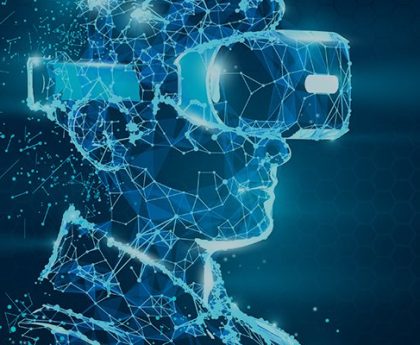-
Table of Contents
Enhancing Abilities Through Implants and Prosthetics: Unleash Your Full Potential.
Human Augmentation Technologies: Enhancing Abilities Through Implants and Prosthetics
Human augmentation technologies refer to the use of implants and prosthetics to enhance and improve human abilities. These technologies have the potential to revolutionize various aspects of human life, from healthcare and rehabilitation to sports and everyday activities. By integrating advanced electronic and mechanical components with the human body, individuals can regain lost functionalities, enhance existing abilities, or even acquire entirely new capabilities. This field of research and development holds great promise for improving the quality of life for individuals with disabilities and has the potential to reshape the boundaries of human potential.
The Evolution of Human Augmentation Technologies: From Implants to Prosthetics
The field of human augmentation technologies has seen significant advancements over the years, with implants and prosthetics playing a crucial role in enhancing human abilities. From the early days of simple implants to the sophisticated prosthetics of today, the evolution of these technologies has been nothing short of remarkable.
Implants, the earliest form of human augmentation, have been used for centuries to improve various aspects of human life. One of the earliest examples of implants can be traced back to ancient Egypt, where wooden toes were used to replace missing limbs. These early implants were rudimentary in nature but laid the foundation for future advancements in the field.
As time progressed, so did the complexity of implants. In the 16th century, the first dental implants were developed, revolutionizing the field of dentistry. These implants provided a permanent solution for individuals with missing teeth, improving their ability to eat and speak. The success of dental implants paved the way for further exploration into the possibilities of human augmentation.
In the 20th century, the development of electronic implants marked a significant milestone in the field. Cochlear implants, for example, allowed individuals with hearing impairments to regain their sense of sound. These implants consisted of a microphone, speech processor, and electrode array that stimulated the auditory nerve, enabling the brain to perceive sound. The success of cochlear implants demonstrated the potential of electronic implants in enhancing human abilities.
Prosthetics, on the other hand, have a long history dating back to ancient civilizations. The earliest known prosthetic limb was discovered in Egypt and dates back to around 950 BC. Made of wood and leather, this prosthetic toe provided functional support to its wearer. Over time, prosthetics evolved, incorporating more advanced materials and designs.
The advent of modern technology has revolutionized the field of prosthetics. Today, prosthetic limbs are made using lightweight materials such as carbon fiber, making them more comfortable and efficient. The integration of robotics and artificial intelligence has further enhanced the capabilities of prosthetics, allowing users to perform complex movements with precision.
One notable advancement in prosthetics is the development of myoelectric prosthetic limbs. These prosthetics use sensors placed on the user’s residual limb to detect muscle movements. The signals generated by these sensors are then translated into specific movements of the prosthetic limb. This technology has significantly improved the functionality and naturalness of prosthetic limbs, enabling users to perform tasks that were once thought impossible.
The evolution of human augmentation technologies, from simple implants to sophisticated prosthetics, has opened up new possibilities for individuals with disabilities. These technologies have not only improved the quality of life for those with physical impairments but have also expanded the boundaries of human capabilities. With ongoing research and development, it is likely that we will witness even more remarkable advancements in the field of human augmentation in the years to come.
In conclusion, the evolution of human augmentation technologies has been a testament to human ingenuity and innovation. From the early days of simple implants to the advanced prosthetics of today, these technologies have played a vital role in enhancing human abilities. As we continue to push the boundaries of what is possible, the future of human augmentation holds immense potential for improving the lives of individuals with disabilities.
Exploring the Benefits of Implants and Prosthetics in Enhancing Human Abilities
Human Augmentation Technologies: Enhancing Abilities Through Implants and Prosthetics
In recent years, the field of human augmentation has seen remarkable advancements, offering individuals the opportunity to enhance their abilities through the use of implants and prosthetics. These technologies have the potential to revolutionize the way we live, work, and interact with the world around us. By exploring the benefits of implants and prosthetics, we can gain a deeper understanding of how these innovations are shaping the future of human potential.
One of the most significant advantages of implants and prosthetics is their ability to restore lost or impaired functions. For individuals who have experienced amputations or disabilities, these technologies offer a lifeline, enabling them to regain mobility and independence. Prosthetic limbs, for example, have become increasingly sophisticated, mimicking the natural movements of human limbs and providing users with a sense of normalcy. With the help of advanced sensors and actuators, these prosthetics can respond to neural signals, allowing users to control them with their thoughts. This level of integration between technology and the human body is truly remarkable, offering a new lease on life for those who have lost a limb.
Beyond restoration, implants and prosthetics also have the potential to enhance human abilities beyond their natural limitations. By augmenting our physical capabilities, we can push the boundaries of what is possible. For athletes, this means improved performance and increased endurance. Implants can provide real-time feedback on vital signs, muscle activity, and oxygen levels, allowing athletes to optimize their training and maximize their potential. Prosthetic limbs can be designed to enhance strength and agility, giving athletes a competitive edge. These advancements not only benefit professional athletes but also individuals who engage in recreational activities, enabling them to enjoy their hobbies to the fullest.
Moreover, implants and prosthetics have the potential to revolutionize healthcare. With the integration of sensors and wireless communication, medical professionals can monitor patients remotely, providing timely interventions and personalized care. Implants can continuously monitor vital signs, detect abnormalities, and transmit data to healthcare providers, allowing for early detection and prevention of diseases. Prosthetics, on the other hand, can be equipped with sensors that provide feedback on pressure distribution and gait analysis, helping individuals with mobility issues improve their posture and reduce the risk of developing musculoskeletal problems. These technologies have the potential to transform the healthcare landscape, improving patient outcomes and reducing the burden on healthcare systems.
While the benefits of implants and prosthetics are undeniable, it is essential to consider the ethical implications of these technologies. As we enhance our abilities, questions arise regarding fairness, equality, and the potential for creating a divide between those who can afford these enhancements and those who cannot. Additionally, concerns about privacy and security must be addressed to ensure the responsible use of these technologies. Striking a balance between innovation and ethical considerations is crucial to ensure that human augmentation technologies are used for the greater good.
In conclusion, implants and prosthetics have the potential to enhance human abilities in remarkable ways. From restoring lost functions to pushing the boundaries of human potential, these technologies offer a glimpse into a future where our abilities are no longer limited by our biology. However, as we embrace these advancements, it is essential to navigate the ethical considerations and ensure that these technologies are used responsibly. By doing so, we can harness the full potential of human augmentation and create a future where everyone has the opportunity to thrive.
Ethical Considerations in the Development and Implementation of Human Augmentation Technologies
Human Augmentation Technologies: Enhancing Abilities Through Implants and Prosthetics
Ethical Considerations in the Development and Implementation of Human Augmentation Technologies
As technology continues to advance at an unprecedented rate, the possibilities for enhancing human abilities through implants and prosthetics are becoming increasingly feasible. Human augmentation technologies offer the potential to improve the lives of individuals with disabilities, as well as enhance the capabilities of healthy individuals. However, the development and implementation of these technologies raise important ethical considerations that must be carefully addressed.
One of the primary ethical concerns surrounding human augmentation technologies is the potential for creating a divide between those who can afford these enhancements and those who cannot. If these technologies are only accessible to the wealthy, it could exacerbate existing social inequalities and create a two-tiered society. It is crucial that efforts are made to ensure equal access to these technologies, regardless of socioeconomic status, in order to prevent further marginalization of disadvantaged individuals.
Another ethical consideration is the potential for unintended consequences and unforeseen risks associated with human augmentation technologies. As these technologies are still in their early stages of development, there is a need for thorough testing and regulation to ensure their safety and effectiveness. The long-term effects of these enhancements on individuals’ physical and mental well-being must be carefully studied and monitored to minimize any potential harm.
Privacy and security concerns also come into play when discussing human augmentation technologies. Implants and prosthetics that are connected to the internet or other networks raise the risk of hacking and unauthorized access to personal information. It is essential that robust security measures are in place to protect individuals’ privacy and prevent any misuse of their personal data. Additionally, individuals must have control over their own augmentation devices, including the ability to turn them off or remove them if desired.
Furthermore, the ethical implications of human augmentation technologies extend to questions of identity and authenticity. Enhancements that fundamentally alter an individual’s physical or cognitive abilities may raise concerns about what it means to be human. Some argue that these technologies could lead to a loss of individuality and a homogenization of society. It is important to consider the potential impact on personal identity and ensure that individuals have the freedom to choose whether or not to undergo augmentation.
Additionally, the potential for discrimination and stigmatization of individuals who choose not to undergo augmentation must be addressed. Society must be prepared to accept and accommodate individuals who choose to remain unaugmented, without subjecting them to prejudice or disadvantage. It is crucial to foster a culture of inclusivity and respect for individual choices in the development and implementation of human augmentation technologies.
In conclusion, while human augmentation technologies hold great promise for enhancing human abilities, they also raise important ethical considerations. Equal access, safety and effectiveness, privacy and security, personal identity, and societal acceptance are all crucial factors that must be carefully considered and addressed. As these technologies continue to evolve, it is essential that ethical frameworks are developed and implemented to guide their development and ensure that they are used in a way that benefits all of humanity. By doing so, we can harness the potential of human augmentation technologies while minimizing any potential harm or inequality.In conclusion, Human Augmentation Technologies, such as implants and prosthetics, have the potential to enhance human abilities. These technologies offer opportunities for individuals with disabilities to regain lost functionalities and improve their quality of life. Additionally, they have the potential to enhance the capabilities of healthy individuals, enabling them to perform tasks beyond their natural abilities. However, ethical considerations, privacy concerns, and the need for further research and development are important factors to address in order to ensure the responsible and safe implementation of these technologies.





